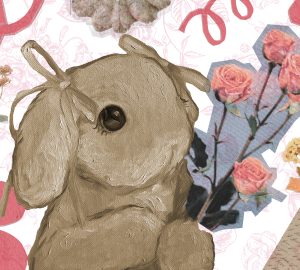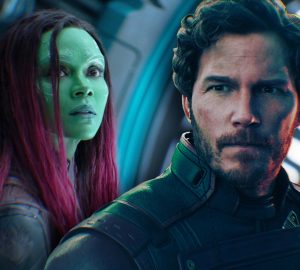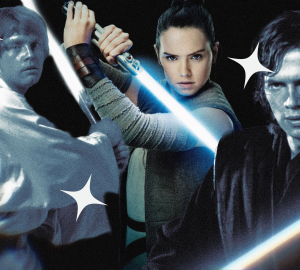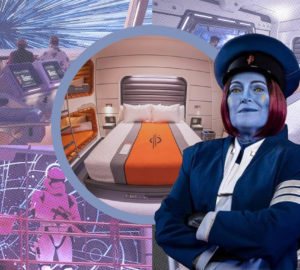Open the toy box with ‘Toy Story 4’ animator Neil Helm
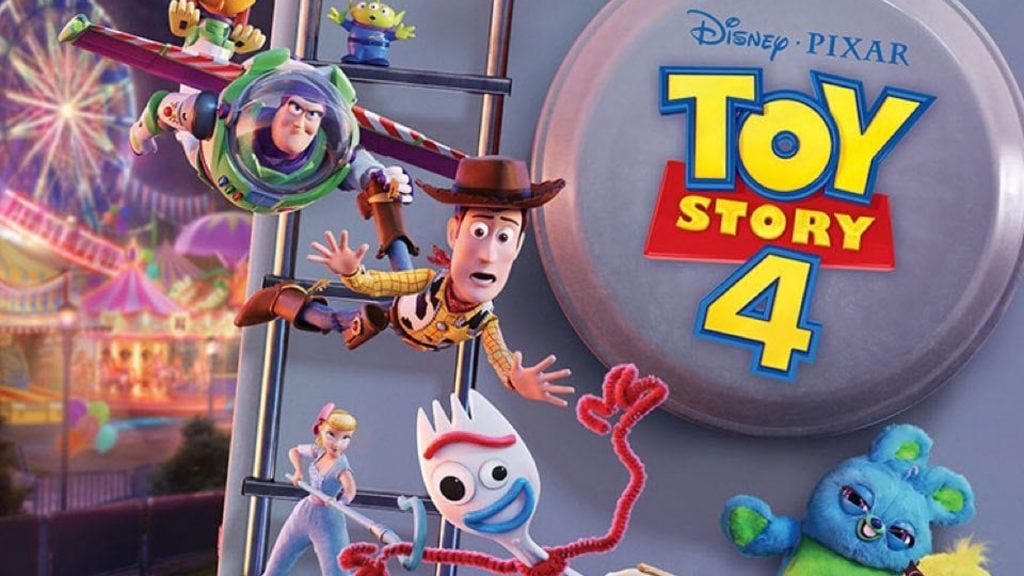
This weekend, one of the year’s most anticipated movies of the year, Pixar’s “Toy Story 4,” will be out in theaters. The film will be following the continuing adventures of the toys, with their leader, Woody, doing his best to protect Bonnie’s newest toy, Forky, while also rediscovering Bo Peep. Following the now iconic ending of “Toy Story 3” back in 2010, fans are interested in seeing how Pixar will be topping themselves in the newest installment in this acclaimed franchise.
As with any of the Pixar films, the work put into “Toy Story 4” is sure to be astounding given the studio’s reputation for pushing the boundaries of animation since the release of the first “Toy Story” back in 1995 and there are plenty of hands on board to make it all possible. One of these many hands is long-time Pixar animator and SCAD alum, Neil Helm, who has been working with the studio for over a decade now as an animator with his first project being 2009’s “Up.” We had the chance to sit down and talk with Helm about his work on the newest “Toy Story” film and what went into his process as an animator.
The Connector: What got you into animation?
Helm: I went to the Savannah College of Art and Design at the Savannah campus for the graduate program for a Masters of Fine Art in Animation. The reason I had chosen that program was because I went to an undergraduate school in Michigan with an art and design program. I had always been interested in art. There were a lot of different emphasises I could focus on in that program, some web design work, some digital illustration, some 3D modeling and some basic 3D animation. Towards the end of my junior year there, I started realizing that I loved animation, specifically character animation. In order to pursue that more fully, my professor at the time recommended that if I was really interested in this, I should think about taking on a masters program at a school that really specializes in that sort of thing. So I looked up a lot of schools in the area and Savannah seemed to have a really great ability to educate students but also provide them with a way to market themselves to help them get a job.
The Connector: How do you think your experience at SCAD helped secure your place at Pixar?
Helm: There were so many students there, hundreds of talented people. They were all working in these long hallways and seeing what everyone was working on. And because there were so many, you would be able to find people who were doing some really neat stuff. Even more exciting was that you could become friends with these people from all over the world and pair up to combine your talents and motivate one another. The school provided fantastic facilities, the professors were great, they were great at mentoring and giving good motivation. But it was really the peers that were top notch. A lot of the friends I built in that environment, I still have today, working at different studios. It’s really important to build those connections because, at the end of the day, you’re all here trying to achieve that same goal of getting a job. The classes are important, but it’s really all that time in between classes and learning from each other where you really learn. In terms of preparing me for the job I have now, I also have to really thank the Career Services Department. My advisor was great at straightening me up for interviews, crafting emails back and forth, sending out reels and showing us how to present ourselves professionally which made a big difference.
The Connector: How did you find yourself at Pixar?
Helm: I was one of those lucky people who had that dream to go there and try and get into the internship. I got really lucky, they had around 1,200 applicants and I was one of 12 to get in. Pixar had been coming to Savannah for recruiting trips and the school did a good job at finding those select few that shined above and would show some of their work to these studios that would come over. Then you would have the opportunity to interview with those companies. I remember getting to talk to a few different ones and you would get a million different questions, “Let me see your demo reel, let me see your business card, let me see your website.” From there, you learn and adjust your package until you get to that level that was working.
I figured out a few months into my grad program that getting an A wasn’t enough. In order to get a job, there was another finish line that I had to strive for. It was becoming more about producing a solid demo reel of character animation work that I could show off some of the elements that studios were really interested in, trying to figure out what that was and how to do it as effectively as possible. I got a lot of help from students who had graduated and were really generous with their time who were working at various places. It was that inside look, from someone who’s actually working and doing the profession I want to do, looking at my reel and giving me feedback, it was all very valuable.
The Connector: After having worked as a professional in the field for some time, how would you say your process has evolved when approaching characters or specific shots?
Helm: The thesis film I worked on here was about a pilot character who was telling a story about an airplane and becomes gradually more excited when telling his tale. As an animator, I was really enjoying the ability to produce this realistic weight, beautiful movements and flowing arcs of these different characters. I became so infatuated with this flowing movement that I forgot about the performance. He was moving around so much that you couldn’t tell what he was thinking. So my feedback from Pixar and some other places was, “You’re doing great, you can make something move, but why are you making it move?” You need to have very clear beats, acting is about clarity. You need to be able to read what’s happening on the character’s face and their body language. So what I’ve learned since leaving SCAD is to focus on the performance and to study acting, to not become so infatuated with beautiful flowing movement. It doesn’t mean anything if it doesn’t have a message or a purpose.
The Connector: You’ve had some experience working on a number of “Toy Story” related projects starting with the third film and some of the shorts that came afterwards. As you probably know, while the fourth has gained plenty of hype, there have been many who may be skeptical walking in this time around. What was your initial reaction when they announced a “Toy Story 4?”
Helm: I suppose my initial reaction was “Oh no, it was so perfect, why are we doing another one?” I had enjoyed working on many of these projects, the stories and characters were all so fun. But this was before learning of the story that they had been telling and once I was able to learn of it, I was hooked. I’ve always believed in that message. Pixar doesn’t make a story because it’s time to shake the money tree again. They are looking for a story. If they have one, they’ll make a movie. And that was at the core of what they had here. There was more of Woody’s story to tell, so it was very neat to know about the care going into it all.
It’s so fun to hear of reactions when people who walk in skeptical end up loving what we made. I think that’s the best way to watch a film, where you don’t have high expectations and you don’t know what you’re going to get, then you’re set up to be blown away. When you walk in with crazy high expectations, it’s a lot more likely that you’ll be disappointed. It’s been real fun to hear people’s reactions.
The Connector: How did your experience as a character animator differ on this project as opposed to the previous “Toy Story” films you worked on?
Helm: My role on “Toy Story 4” was slightly different than before, where I acted as the animation crowd lead. Now I was in the position where I was guiding a group of talented animators and teaching them on how to produce really good performances that are featured behind Woody and the other main characters in support of the story. I found it incredibly rewarding. I was a crowd animator when I first started. You’re a new person at the studio, you’re excited to learn, you’re excited to work on a big project, but you’re also nervous and scared by all the talented people around you, so it was nice to have such great mentors guide me through that. So I got a chance to do the same thing, to kind of pay that back and it was a great opportunity. There’s a lot of energy and life that needs to be added to this surrounding world. Just a great way for people to show what they’re able to do. I may have not been able to do a lot of animation personally on “Toy Story 4,” but helping guide people and improve their careers was really beneficial, I couldn’t thank the studio enough for giving me that chance.
The Connector: There have been so many people that have had such a long time attachment to the “Toy Story” franchise, people who have quite literally grown up with these movies. Having had some hand in crafting this legacy, what do you hope people can take away after watching this movie, and likewise, what is the greatest lesson you’ve learned on this journey?
Helm: I just really enjoyed being a lead on this film. I’ve always been an individual contributor prior to this film. Being a mentor was so rewarding, I got a chance to work on a lot of the movie instead of just a small piece of it. It’s just great to work at such a large company with so many different departments that’s so great at working with one another. When you’re in a leadership role, you’re doing a lot more with so many of these different groups of people and developing so many different allies and relationships, figuring out what each group wants and how to give it to them. So it was great getting these groups together and building something that they could all be proud of.
I’ve always loved Woody’s journey, his new sense of discovery of what he’s capable of doing in the new stages of his life. That constant revaluation of where you are, what makes sense and trying to figure out how to move forward, I thought that was really profound. Now he’s at a phase of his life where he’s at his next chapter, it wasn’t easy, but that’s why we love him so much. He’s very positive, he tries to work really hard and he’s a character who we admire and aspire to be.
Be sure to see “Toy Story 4” out now.





